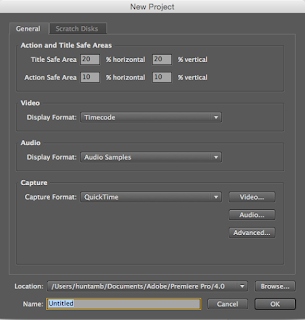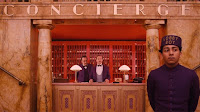How to Use Adobe Premiere Pro

2) After clicking that, name the project 1) Open the program and click 'New Project' 3) You will then be directed to this page where you will need to choose a preset. For my film I chose the 'AVCHD 1080p24' preset. To find this I clicked on 'AVCHD' then '1080p' and finally my previously stated pre-set. This allows my film to be in high definition quality and it will be at 24fps making it visually clearer and smoother when watching. This is the layout of the program when you will be editing. on this page there is the timeline sequence (bottom) where you edit all of your footage and audio together. To the left of that is where you find all of your files. Above this is where you place your desired files so they are easy to use and all in one place together. To the right of that is where you cut and view each file and next to that is where you can preview your work. ...



